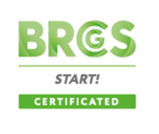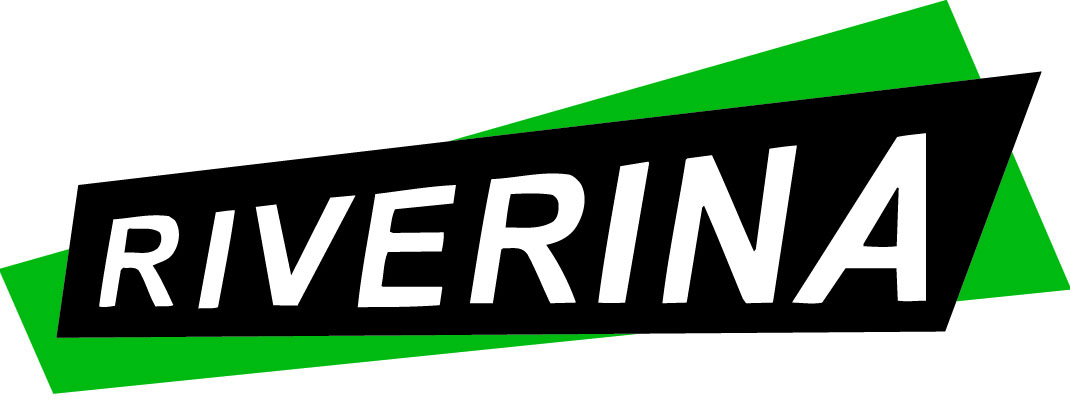Title Page
-
Site conducted
-
Conducted on
-
Prepared by
-
3.5.1.1 RAW MATERIAL RISK ASSESSMENT. Does Walsh's undertake a documented risk assessment of each raw material or group of raw materials, including primary packaging, to identify potential risks to product safety, <br>authenticity, legality and quality?. This shall take into account the potential for:<br>• allergens (allergen content and potential contamination)<br>• foreign-body risks<br>• microbiological contamination<br>• chemical contamination<br>• variety or species cross-contamination<br>• substitution or fraud (see clause 5.4.2)<br>• any risks associated with raw materials which are subject to legislative control or customer requirements.<br>Consideration shall also be given to the significance of a raw material to the quality of the final product.<br>The risk assessment shall form the basis for the raw material acceptance and testing procedure and for the processes adopted for supplier approval and monitoring.<br>The risk assessment for a raw material shall be updated:<br>• when there is a change in a raw material, the processing of a raw material, or the supplier of a raw material<br>• if a new risk emerges<br>• following a product recall or withdrawal, where a specific raw material has been implicated<br>• at least every 3 years.
-
What is the route cause?
-
3.1.5.2 DOCUMENTED SUPPLIER APPROVAL & MONITORING SYSTEM. Does Walsh's have a documented supplier approval procedure to ensure that all suppliers of raw materials, including primary packaging, effectively manage risks to raw material quality and safety and are operating effective traceability processes? The approval procedure shall be based on risk and include either one or a combination of:<br>• a valid certification to the applicable BRCGS Standard or GFSI-benchmarked standard. The scope of the certification shall include the raw materials purchased<br>or<br>• supplier audits, with a scope to include product safety, traceability, HACCP review, the product security and food defence plan, the product authenticity plan and good manufacturing practices. The audit shall ensure that these plans form part of the supplier’s product safety management system and that any resultant actions are implemented. The supplier audit shall be undertaken by an experienced and demonstrably competent product safety auditor. Where the supplier audit is completed by a second or third party, the company shall be able to:<br>• demonstrate the competency of the auditor<br>• confirm that the scope of the audit includes product safety, product security and food defence plan, product authenticity, traceability, HACCP review and good manufacturing practices<br>• obtain and review a copy of the full audit report<br>or<br>• where a valid risk-based justification is provided and the supplier is assessed as low risk only, a completed supplier questionnaire may be used for initial approval. At a minimum, the questionnaire shall have a scope that includes product safety, product security and food defence, product authenticity, traceability, HACCP review and good manufacturing practices. The questionnaire shall have been reviewed and verified by a demonstrably competent person.
-
What is the route cause?
-
3.5.1.3. ONGOING MONITORING. Does Walsh's have a documented process for ongoing supplier performance review, based on risk <br>and defined performance criteria? The process shall be fully implemented.<br>Where approval is based on questionnaires, these shall be reissued at least every 3 years and suppliers shall be required to notify the site of any significant changes in the interim, including any change in certification status.<br>Records of the review shall be kept.
-
What is the route cause?
-
3.5.1.4 APPROVED SUPPLIER LIST. Does Walsh's have an up-to-date list or database of approved suppliers? This may be on paper (hard copy) or it may be controlled on an electronic system.<br>The list or relevant components of the database shall be readily available to the relevant staff (e.g. at goods receipt).
-
What is the route cause?
-
3.5.1.5 PURCHASING FROM AGENTS & BROKERS. Where raw materials (including primary packaging) are purchased from companies that are not the manufacturer, packer or consolidator (e.g. purchased from an agent, broker or <br>wholesaler), does Walsh's know the identity of the last manufacturer or packer, or for bulk commodity products the consolidation place of the raw material.<br>Information to enable the approval of the manufacturer, packer or consolidator, as in clauses 3.5.1.1 and 3.5.1.2, shall be obtained from the agent/broker or directly from the supplier, unless the agent/broker is themselves certificated to a BRCGS Standard (e.g. Global Standard Agents and Brokers) or a standard benchmarked by GFSI
-
What is the route cause?
-
3.5.1.6 SUPPLY CHAIN TRACEABILITY. Does Walsh's ensure that its suppliers of raw materials (including primary packaging) have an effective traceability system? Where a supplier has been approved based on a questionnaire instead of certification or audit, verification of the supplier’s traceability <br>system shall be carried out on first approval and then at least every 3 years. This may be achieved by a traceability test.<br>Where the supplier is not the manufacturer, packer or consolidator of the raw material (e.g. purchased from an agent, broker or wholesaler) and approval is based on a questionnaire instead of certification or audit, the verification of the traceability system shall be carried out by the last manufacturer, packer or consolidator of the raw material.<br>Where a raw material is received directly from a farm or fish farm, further verification of the farm’s traceability system is not mandatory.
-
What is the route cause?
-
3.5.1.7 EXEMPTION PROCEDURE. Does the procedures define the actions required in either of the following circumstances:<br>• an exception to the supplier approval processes in clause 3.5.1.2 occurs (e.g. where raw material suppliers are prescribed by a customer)<br>• information for effective supplier approval is not available (e.g. bulk agricultural <br>commodity products).<br>In both the above situations, product testing is used to verify product quality and safety.<br>When a site produces customer-branded product, the customer shall be made aware of the relevant exceptions.
-
What is the route cause?
-
3.5.2.1 ACCEPTANCE OF RAW MATERIALS. Does Walsh's have a procedure for the acceptance of raw materials and primary packaging on receipt based upon the risk assessment (clause 3.5.1.1)? Acceptance of raw materials (including primary packaging) and their release for use shall be based on either one or a combination of:<br>• product sampling and testing<br>• visual inspection on receipt<br>• certificates of analysis (specific to the consignment)<br>• certificates of conformance.<br>A list of raw materials (including primary packaging) and the requirements to be met for acceptance shall be available. The parameters for acceptance and frequency of testing shall be clearly defined, implemented and reviewed.
-
What is the route cause?
-
3.5.2.2 COMMUNICATING CHANGES TO GOOD RECIEPT. Are procedures in place to ensure that approved changes to raw materials (including <br>primary packaging) are communicated to goods receipt personnel and that only the correct version of the raw material is accepted. For example, when labels or printed packaging have been amended, only the correct version should be accepted and released into production
-
What is the route cause?
-
3.5.3.1 APPROVAL & MONITORING OF SERVIEC PROVIDERS. Are procedures in place for the approval and monitoring of suppliers of services? Such <br>services shall include, as appropriate:<br>• pest control<br>• laundry services<br>• contracted cleaning<br>• contracted servicing and maintenance of equipment<br>• transport and distribution<br>• off-site storage of ingredients or packaging (other than at the supplier’s facilities) prior to delivery to the site<br>• off-site packing of products<br>• laboratory testing<br>• catering services<br>• waste management<br>• providers of product safety training<br>• product safety consultants.<br>This approval and monitoring process shall be risk-based and take into consideration:<br>• risk to the safety and quality of products<br>• compliance with any specific legal requirements<br>• potential risks to the security of the product (i.e. risks identified in the vulnerability and food defence assessments)
-
What is the route cause?
-
3.5.3.2 CONTRACTS WITH SERVICE PROVIDERS. Do contracts or formal agreements exist with the suppliers of services that clearly define service expectations and ensure that the potential food safety risks associated with the service have been addressed.
-
What is the route cause?
-
3.5.3.3 ONGOING REVIEW. There shall be a documented process for ongoing performance review of suppliers of services, based on risk and defined performance criteria. The process shall be fully implemented.<br>Records of the review shall be kept.
-
What is the route cause?
-
3.5.4.1. BRAND OWNER APPROVAL. The company shall be able to demonstrate that, where part of the production process (i.e. any intermediate process step) is outsourced or undertaken off site, and subsequently returned to the site, this has been declared to the customer and, where required, approval granted
-
What is the route cause?
-
3.5.4.2 OUTSCOURCEDPROCESSOR APPROVAL. Does Walsh's ensure that outsourced processors are approved and monitored, to ensure that they effectively manage risks to product safety and quality and are operating effective traceability processes. The approval and monitoring procedure shall be based on risk and include either one or a combination of:<br>• a valid certification to the applicable BRCGS Standard or GFSI-benchmarked standard. The <br>scope of the certification shall include the activities completed for the site<br>or<br>• supplier audits, with a scope to include product safety, traceability, HACCP review, product security and food defence plan, product authenticity plan and good manufacturing practices. The audit shall ensure that these plans form part of the supplier’s product safety management system and that any resultant actions are implemented. The supplier <br>audit shall be undertaken by an experienced and demonstrably competent product safety auditor. Where this supplier audit is completed by a second or third party, the company shall be able to:<br>• demonstrate the competency of the auditor<br>• confirm that the scope of the audit includes product safety, traceability, HACCP <br>review, product security and food defence plan, product authenticity plan and good manufacturing practices<br>• obtain and review a copy of the full audit report.<br>There shall be a documented process for ongoing supplier performance review, based on risk and defined performance criteria. The process shall be fully implemented. Records of the review shall be kept.
-
What is the route cause?
-
3.5.4.3 Where any processes are outsourced, including production, manufacture, processing or storage, the risks to the product safety, authenticity and legality shall form part of the site’s food safety plan (HACCP plan).
-
What is the route cause?
-
3.5.4.4 Requirements for outsourced processing shall be agreed and documented in a service specification (similar to a finished product specification). This shall include any specific handling requirements for the products
-
What is the route cause?












